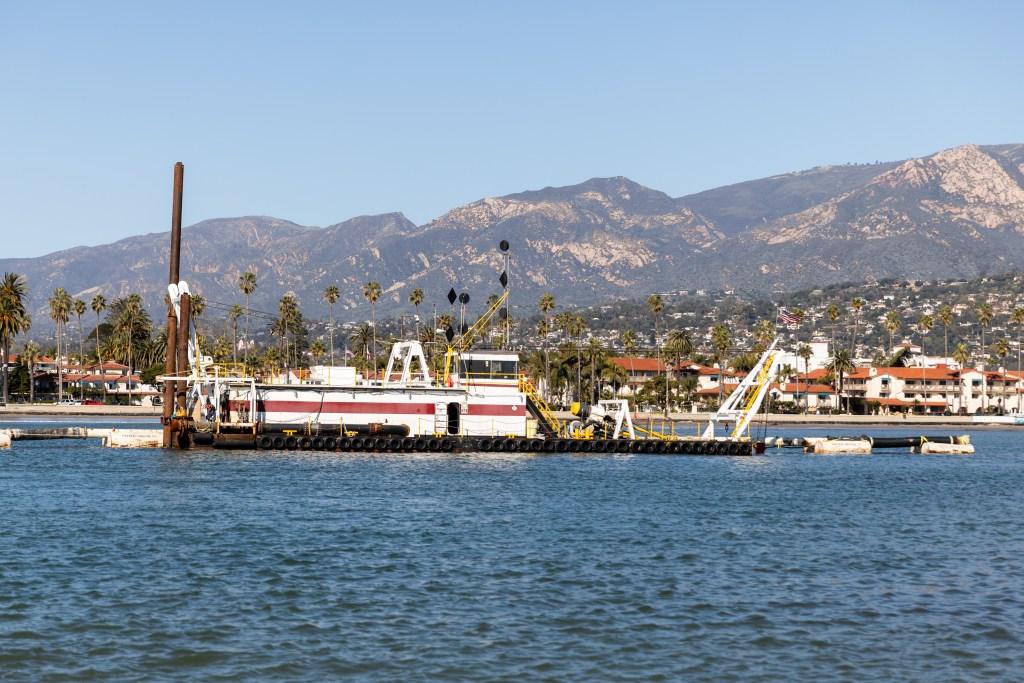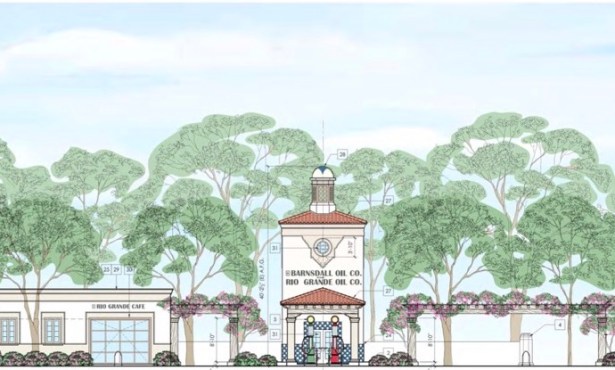Santa Barbara Harbor Reopens After Nearly Three Weeks
Dredge Clears Blocked Harbor Mouth of Sand Deposited by Winter Storm

This Sunday, January 28, the mouth of the Santa Barbara Harbor was sufficiently dredged to allow boats of all sizes to come in and out of the waterfront without an emergency escort by the Harbor Patrol. The harbor had been effectively closed since January 9, in part, because about two years’ worth of sand had been deposited within a 24-48 hour time period during unusually high swells — 12-14 feet high — that scoured the coast only a few days prior to the recent major storms.
Those downpours triggered evacuations and inflicted hundreds of millions worth of damage throughout the county. The harbor was sufficiently shoaled in by the massive sand accumulation that the United States Coast Guard’s 87-foot search-and-rescue cutter, Black Fin, was blocked in for 19 days. Santa Barbara Landing’s two charter boats were reportedly blocked for 17 days.
While some commercial fishing operators figured out how to get in and out during high tides, several boats reportedly ran aground while trying to navigate passage, countless lobster traps were washed onto the waterfront’s newly rocky shoreline, and one support vessel servicing the offshore oil rigs suffered damage to a propeller.
Typically, the harbor is dredged twice a year to maintain a mouth 120 feet wide and 14-20 feet deep. As a result of the swells and all the sand redistributed because of them — enough reportedly to fill 500 dump trucks — the harbor mouth narrowed to just 30-40 feet in width with just 6-8 feet of clearance for the hulls.

During the most recent Harbor Commission meeting, Harbor Commissioner Merit McCrea asked multiple pointed questions suggesting that waterfront officials had not taken adequate steps to prepare for the swells and the storms. He and Jaime Diamond — owner of Santa Barbara Landing — questioned why there had been no dredging last fall when such dredging has customarily taken place every year around October or November.
McCrea also pointedly wondered why the waterfront administrator whose job description specifically includes working with the Army Corps of Engineers on dredging matters passed off those responsibilities to another senior administrator whose job description, he noted, conspicuously does not include those duties.
Typically, the harbor is dredged twice a year, during the fall and spring, at a cost to the federal government of about $2 million to $3 million. This funding is part of a federal omnibus bill weighing in at $3 billion to $4 billion.
According to Waterfront Director Mike Wiltshire, the Army Corps of Engineers — which has financial and administrative responsibility for the harbor dredging — was set back in its normal dredging schedule by a couple of months this past year because additional environmental analysis of an unspecified nature had been required.
Compounding matters, the existing dredging contract expired at the end of 2022 and had to be put out anew for bid. While this bidding process was still underway, the private operator who holds the most recent contract is required by federal protocol to remove the barge and all the pipes by which the dredged sand is re-distributed from the harbor mouth.
Wiltshire downplayed the suggestion that this failure to dredge this past fall caused the shutting down of the harbor. Given the vast quantities of sand deposited by the swells, he argued, the harbor would have been sanded-in regardless. As for reassigning the role of dredge liaison to another administrator, Wiltshire said that administrator had more years on the job and was on a first-name basis with many of the private contractors who’d been dredging the harbor.
Support the Santa Barbara Independent through a long-term or a single contribution.




You must be logged in to post a comment.